Cooking brisket on a pellet grill can be a challenging endeavor, but with the right guidance and know-how, you can transform this substantial cut of beef into mouthwatering masterpieces right in your backyard.
Brisket, known for its rich flavor and tender texture, is perfect for slow roasting and cooking techniques. Whether you’re a beginner or a seasoned pitmaster, this article will provide you with valuable tips and tricks to help you perfect the art of cooking brisket on a pellet grill.
Key Takeaways:
- Choose a fresh, well-marbled brisket for the best results.
- Trim off excess fat and season with a flavorful rub.
- Smoke the brisket at a consistent temperature for several hours.
- Consider using the Texas crutch method by wrapping the brisket in foil or butcher paper.
- Cook the brisket until it reaches an internal temperature of 202 to 205 degrees Fahrenheit.
Choosing the Perfect Brisket
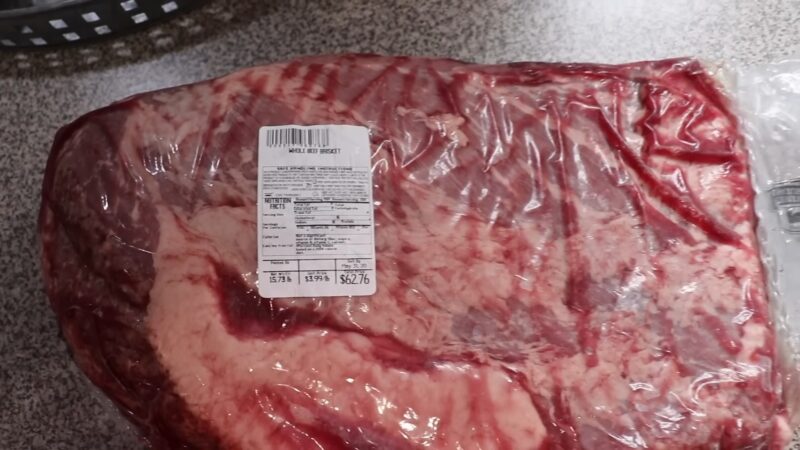
The key to a successful smoked brisket starts with choosing the perfect cut of meat – a fresh and well-marbled brisket will ensure a tender and flavorful end result. When selecting a brisket for smoking on a pellet grill, there are a few essential factors to consider.
Characteristics of a Good Brisket
A good brisket should have a bright red color, indicating its freshness. Look for a brisket that feels firm to the touch and has a thin layer of fat evenly distributed over the meat. The fat should be white or creamy in color, known as marbling, as it will melt during the cooking process and infuse the meat with flavor and tenderness.
It is also important to choose a brisket that is the right size for your cooking needs. A brisket that weighs around 10 to 12 pounds is a popular choice for most smokers, as it provides a good balance between meaty flavor and cooking time.
| Characteristics | What to Look For |
|---|---|
| Color | Bright red |
| Texture | Firm |
| Fat | Even distribution, creamy marbling |
| Size | Around 10-12 pounds |
When purchasing your brisket, talk to your butcher and ask for their recommendations. They can guide you towards the freshest and best-cut brisket available, ensuring your barbecue will be a success.
Trimming and Seasoning the Brisket
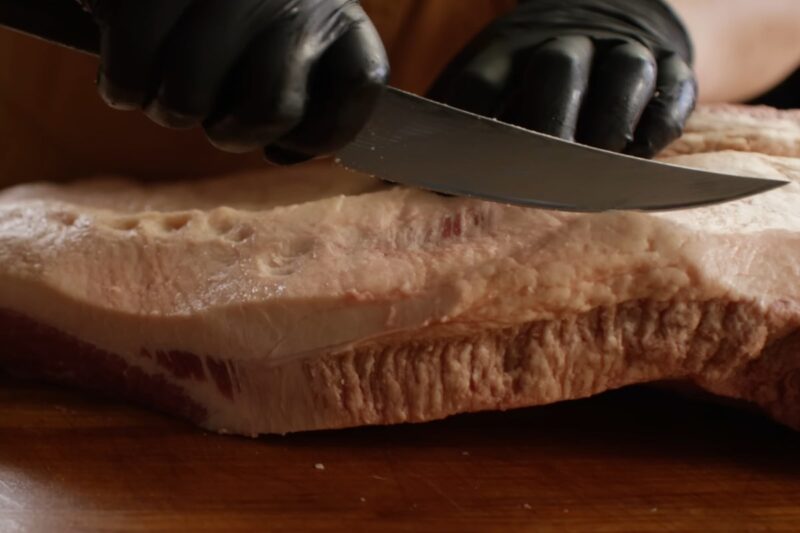
Before placing the brisket on the pellet grill, it’s essential to trim off any excess fat and season it with a flavorful rub that will complement the smoky flavors. Trimming the brisket helps to remove any tough or unwanted parts, ensuring a more even and tender cook. To do this, start by placing the brisket on a cutting board and using a sharp knife to carefully trim away any thick layers of fat. It’s important to leave a thin layer of fat on top to keep the meat moist during the cooking process.
Once the brisket is trimmed, it’s time to season it with a rub. A rub is a combination of herbs, spices, and seasonings that add flavor and enhance the overall taste of the meat. There are countless rub recipes available, but a classic blend of salt, pepper, garlic powder, and paprika is always a good place to start. Generously sprinkle the rub mixture on all sides of the brisket, gently patting it into the meat to ensure it adheres properly.
Creating a Flavorful Rub
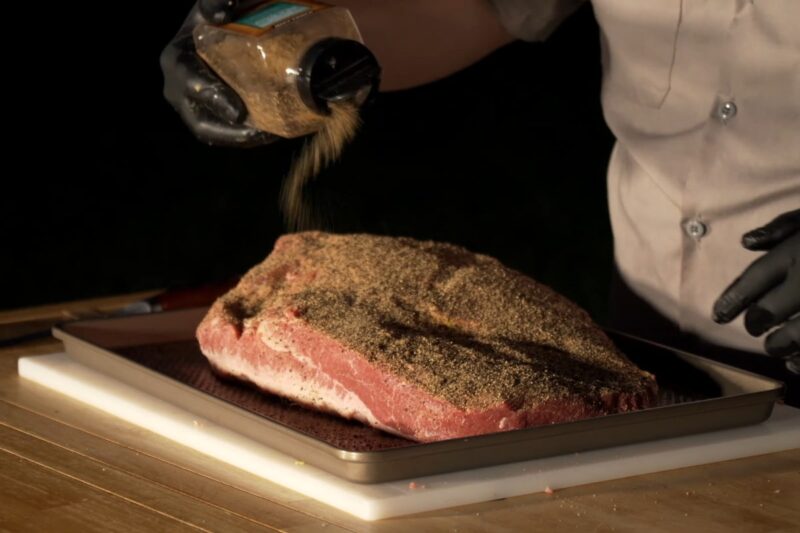
While a basic rub can be delicious, you can also get creative with your seasonings to develop a more customized flavor profile. Experiment with different ingredients like brown sugar, cayenne pepper, chili powder, or even coffee grounds to add depth and complexity to your rub. Just be sure to taste your rub mixture before applying it to the brisket to ensure the flavors are well-balanced.
| Rub Ingredients | Amount |
|---|---|
| Salt | 2 tablespoons |
| Black pepper | 2 tablespoons |
| Garlic powder | 1 tablespoon |
| Paprika | 1 tablespoon |
Once your brisket is trimmed and seasoned, you’re ready to move on to the next steps in the smoking process. With the fat trimmed and the rub applied, your brisket is now primed for a mouthwatering cooking experience on the pellet grill. The combination of the smoky flavors, tender meat, and perfectly balanced seasonings will result in a brisket that’s sure to impress your family and friends.
The Smoking Process
Smoking the brisket involves exposing it to a low and consistent temperature for several hours, allowing the smoke to infuse the meat with its unique flavors. This process is what gives smoked brisket its mouthwatering taste and tender texture. To achieve the best results, it is important to maintain a steady temperature throughout the smoking process.
When smoking brisket on a pellet grill, it is recommended to set the temperature between 225 and 250 degrees Fahrenheit. This ensures that the meat cooks slowly, allowing ample time for the flavors to develop. Pellet grills are ideal for smoking because they provide consistent heat and allow for easy temperature control. You can also add wood pellets of your choice to the grill for an extra layer of smoky flavor.
During the smoking process, it is important to resist the temptation to constantly check on the brisket. Opening the grill too often can cause fluctuations in temperature, which can affect the overall cooking time and result in a less tender brisket. Instead, trust the process and monitor the temperature periodically. Remember, low and slow is the key to achieving that perfectly smoked brisket.
As the brisket smokes, it will develop a beautiful bark on the outside, which is a result of the Maillard reaction. This is a chemical reaction between the proteins and sugars in the meat that creates a delicious crust. To protect the bark from becoming too dark or burnt, some pitmasters choose to wrap the brisket in foil or butcher paper halfway through the smoking process. This technique, also known as the Texas crutch, helps to preserve moisture and speed up the cooking time.
| Temperature | Time |
|---|---|
| 225°F | 1 hour per pound |
| 250°F | 45 minutes per pound |
| 275°F | 30 minutes per pound |
Remember that each brisket is unique, so the cooking time may vary depending on its size and thickness. It is important to use an instant-read meat thermometer to check the internal temperature. The brisket is ready to be removed from the grill when it reaches an internal temperature of 202 to 205 degrees Fahrenheit. Once the desired temperature is reached, remove the brisket from the grill and let it rest for at least an hour before slicing. This allows the juices to redistribute, resulting in a moist and flavorful brisket.
The Texas Crutch Method
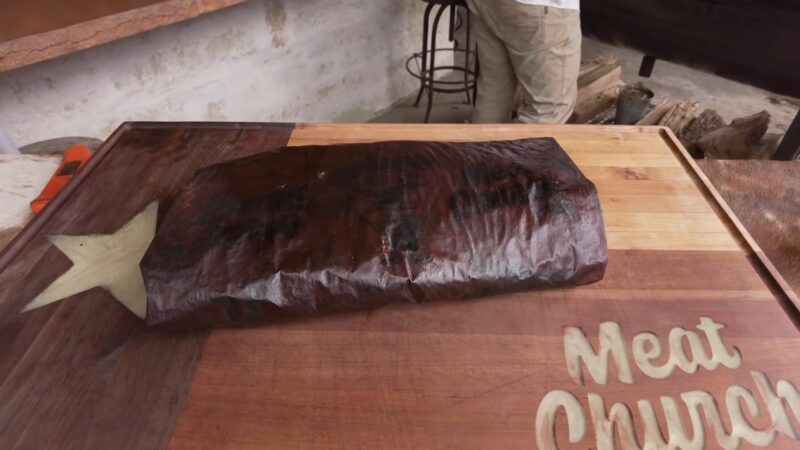
To achieve a tender and juicy brisket, some pitmasters opt to wrap their meat in either foil or butcher paper, also known as the Texas crutch method. This technique involves tightly wrapping the brisket to help preserve moisture and speed up the cooking process. Let’s take a closer look at how the Texas crutch method works and why it’s a popular choice among barbecue enthusiasts.
When smoking a brisket, it’s essential to maintain a moist environment to prevent the meat from drying out. Wrapping the brisket in foil or butcher paper creates a barrier that traps the natural juices and steam produced during the cooking process. This not only helps to preserve moisture but also enhances the tenderness of the meat.
The Texas crutch method is particularly beneficial when cooking larger cuts of brisket, as it can help expedite the cooking time. By tightly wrapping the brisket, the heat is trapped, allowing the meat to cook more quickly and evenly. This method can be especially useful when you’re working with a time constraint or if you simply prefer a faster cooking process.
Wrapping with Foil or Butcher Paper
When it comes to selecting the wrapping material, you have two options: foil or butcher paper. Both provide similar benefits, but there are some key differences to consider.
| Foil | Butcher Paper | |
|---|---|---|
| Benefits | Seals in moisture completely | Breathable, allowing some moisture to escape while still retaining juiciness |
| Texture | Creates a slightly softer bark | Preserves a firmer bark |
| Appearance | Produces a shinier exterior | Gives a more natural, rustic look |
Ultimately, the choice between foil and butcher paper comes down to personal preference and the desired outcome. Foil provides a tighter seal and produces a slightly softer bark, while butcher paper allows for more airflow and a firmer bark. Whichever method you choose, the Texas crutch technique is a valuable tool to elevate your brisket-smoking game and achieve mouthwatering results.
Reaching the Perfect Internal Temperature
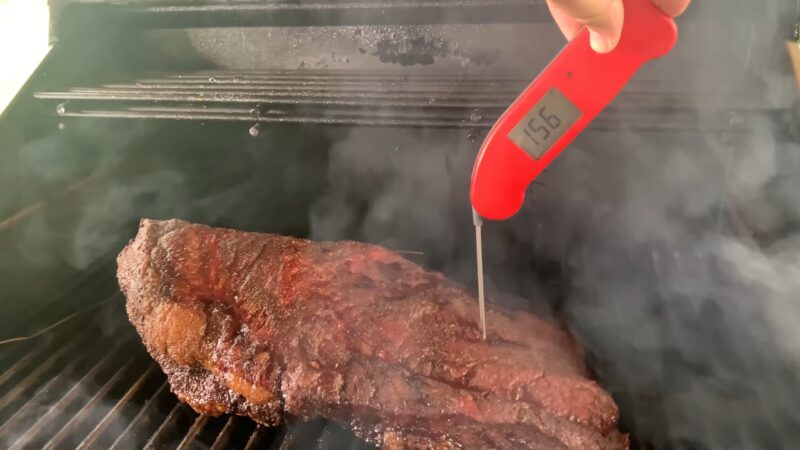
To ensure a moist and tender brisket, it’s important to cook it until it reaches an internal temperature of 202 to 205 degrees Fahrenheit. This temperature range allows the collagen in the meat to break down, resulting in a melt-in-your-mouth texture that brisket is known for. Achieving the perfect internal temperature requires careful monitoring and a bit of patience.
During the smoking process, it’s crucial to maintain a consistent temperature in your pellet grill. Fluctuations can affect the cooking time and the overall result of your brisket. Use a reliable meat thermometer to monitor the internal temperature as the brisket cooks. Insert the thermometer probe into the thickest part of the meat without touching the bone for accurate readings.
As the brisket cooks, it will go through a temperature plateau, where the internal temperature stalls for several hours. This is completely normal and occurs as the collagen breaks down. Don’t rush the process. Patience is key to achieving that tender, juicy brisket. Once the internal temperature reaches around 150 degrees Fahrenheit, you may experience this stall. Don’t panic, as the temperature will eventually start to rise again.
| Level of Doneness | Internal Temperature |
|---|---|
| Medium-Rare | 202°F |
| Medium | 205°F |
| Well-Done | 207°F |
Remember, these temperature guidelines are just starting points. Each brisket is different, and personal preference plays a significant role. Some people may prefer their brisket on the rarer side, while others enjoy it well-done. By experimenting with different cooking times and temperatures, you’ll find the sweet spot that suits your taste.
Resting the Brisket
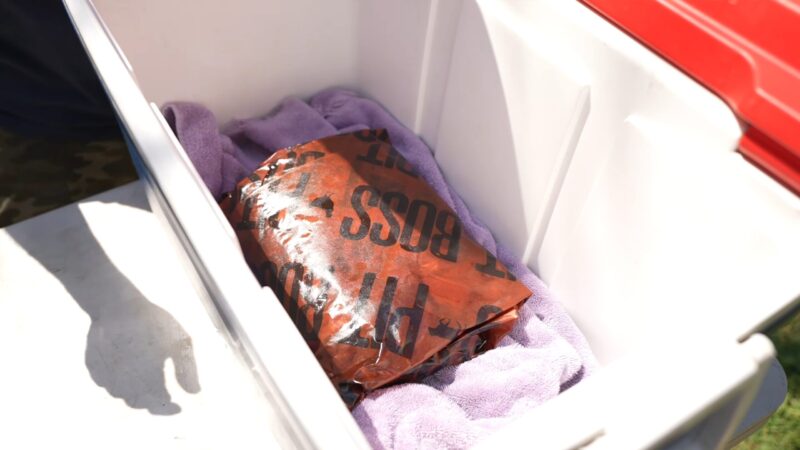
After the brisket is cooked to perfection, it is essential to let it rest for at least an hour, wrapped in a well-insulated cooler, to allow the flavors to meld and the juices to redistribute. This crucial step ensures that every bite of the brisket is moist and tender, creating a dining experience that will leave your guests impressed.
During the resting period, the residual heat continues to gently cook the brisket while the insulation of the cooler helps to retain its warmth. This slow and even distribution of heat allows the connective tissues in the meat to break down further, resulting in a more tender and succulent final product.
While it may be tempting to cut into the brisket immediately after cooking, resist the urge. Slicing into the meat too soon will cause the juices to flow out, leaving you with a drier brisket. Patience is key here, as the resting period is what separates a good brisket from an exceptional one.
Once the resting time is complete, the brisket is ready to be sliced and served. Take your time to carve each slice against the grain, ensuring maximum tenderness. The reward for your patience and attention to detail will be a moist, flavorful brisket that is sure to impress even the most discerning barbecue enthusiasts.
The Art of Patience and Practice
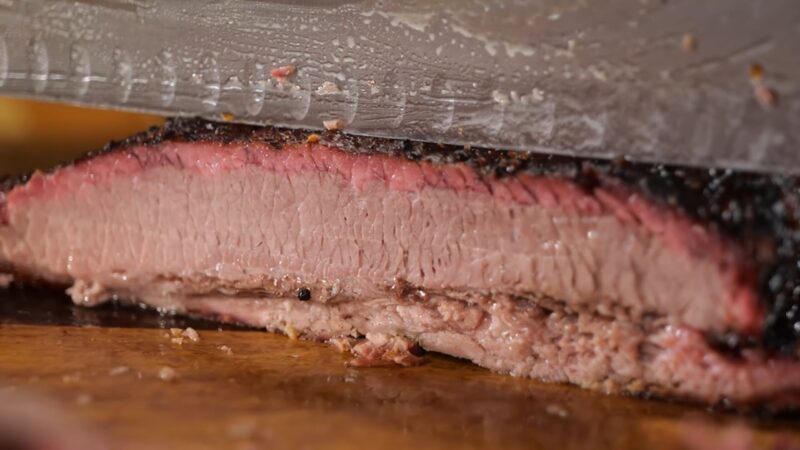
Like any culinary art, smoking brisket is a skill that takes time and practice to master, but with dedication and perseverance, you’ll soon become a pitmaster in your own right. Smoking a brisket on a pellet grill is a labor of love that rewards you with tender, flavorful meat that melts in your mouth. However, it requires patience and a commitment to honing your skills.
One of the key aspects of smoking brisket is maintaining a consistent temperature throughout the cooking process. This can be achieved by regularly monitoring the temperature of your pellet grill and making any necessary adjustments. It’s important to resist the temptation to rush the cooking time or increase the temperature, as this can result in a tough and dry brisket.
Experiment with different wood flavors
To truly elevate your brisket-smoking game, don’t be afraid to experiment with different wood flavors. Each type of wood imparts a unique aroma and taste to the meat, allowing you to create a customized flavor profile. Popular options include hickory for a strong and smoky flavor, apple for a slightly sweet and fruity note, and mesquite for a bold and robust taste. By trying out different wood flavors, you can discover your personal favorite and add a signature touch to your brisket.
Smoking brisket requires perseverance and practice, but the results are worth it. The journey to becoming a skilled pitmaster is filled with trial and error, but each attempt brings you closer to achieving barbecue perfection.
Another tip to keep in mind is to document your smoking sessions. Take notes on the temperature, cooking time, wood flavor, and any other variables that may affect the outcome of your brisket. This will allow you to track your progress over time and make adjustments as needed. Remember, practice makes perfect, and by continually refining your technique, you’ll soon be producing mouthwatering brisket that impresses family and friends.
| Tips for Smoking Brisket Success |
|---|
| Choose a fresh and well-marbled brisket |
| Trim off excess fat and season with a rub |
| Maintain a consistent temperature throughout smoking |
| Experiment with different wood flavors |
| Monitor and record your cooking details for future reference |
In conclusion, smoking brisket on a pellet grill is a culinary journey that requires passion, perseverance, and practice. By dedicating yourself to mastering the art of smoking, you’ll be rewarded with tender, juicy, and delicious brisket that will impress even the most discerning barbecue aficionados.
Leftover Brisket Recipe Ideas
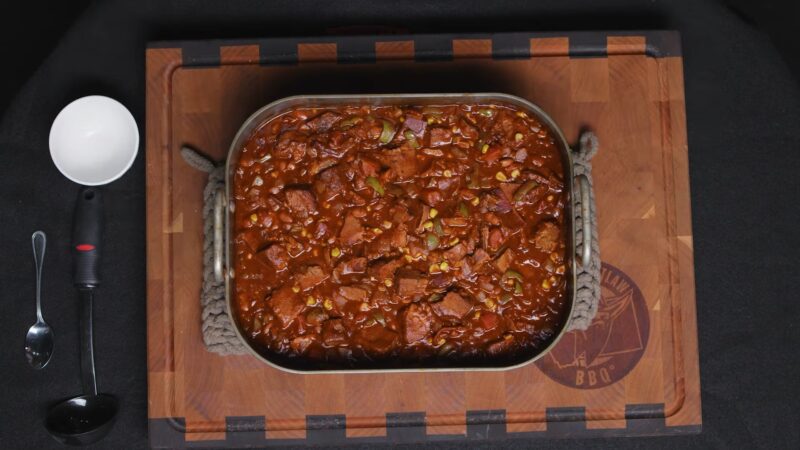
Don’t let any leftover brisket go to waste – repurpose it into mouthwatering dishes like chili or tacos for a delicious and satisfying meal. Leftover brisket is a versatile ingredient that can add a rich and smoky flavor to a variety of dishes. Whether you prefer a hearty and comforting chili or a flavorful and filling taco, there are plenty of creative ways to transform your leftover brisket into a new culinary masterpiece. Here are a few recipe ideas to inspire your next meal:
1. Brisket Chili
Create a hearty and smoky chili by combining your leftover brisket with beans, tomatoes, and spices. The tender meat will infuse the chili with its delicious flavors, resulting in a satisfying and comforting meal. Serve it with a dollop of sour cream and a sprinkle of cheese for added richness.
2. Brisket Tacos
Elevate your taco game by using leftover brisket as the star ingredient. Warm up some tortillas, fill them with slices of juicy brisket, and top with your favorite taco fixings such as salsa, guacamole, and cilantro. The combination of the smoky meat and zesty toppings will create a flavor explosion in every bite.
With these recipe ideas, you can transform your leftover brisket into new and exciting dishes that will satisfy your taste buds. Don’t be afraid to get creative and experiment with different flavors and ingredients. Enjoy the deliciousness of your smoked brisket in a whole new way!
| Recipe | Ingredients | Instructions |
|---|---|---|
| Brisket Chili | Leftover brisket, beans, tomatoes, spices | 1. In a large pot, sauté onions and garlic. 2. Add leftover brisket, beans, tomatoes, and spices. 3. Simmer the chili for about an hour, allowing the flavors to meld together. 4. Serve hot with sour cream and cheese on top. |
| Brisket Tacos | Leftover brisket, tortillas, salsa, guacamole, cilantro | 1. Warm up the tortillas. 2. Slice the leftover brisket into thin strips. 3. Fill each tortilla with brisket slices and top with salsa, guacamole, and cilantro. 4. Enjoy the flavorful and juicy brisket tacos. |
Tips for Brisket Smoking Success
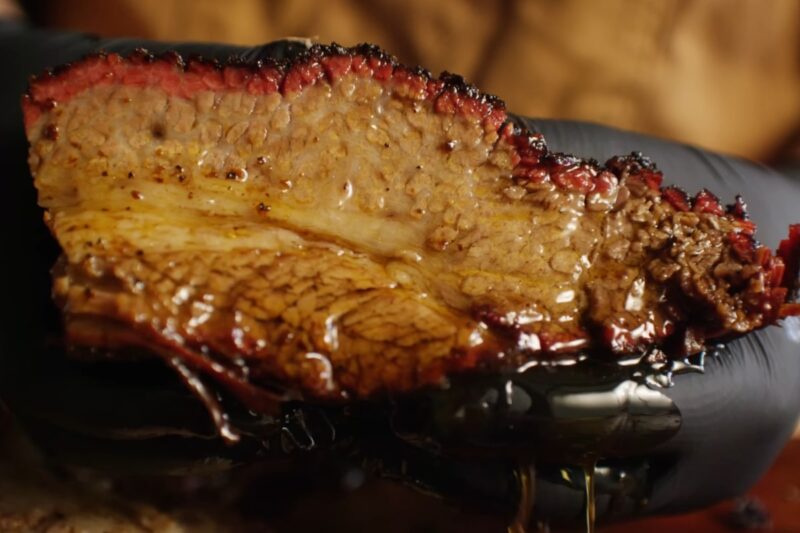
To ensure a successful brisket smoking experience, consider incorporating these expert tips and tricks into your grilling repertoire:
- Choose the right brisket: When selecting a brisket, opt for one that is fresh and well-marbled. The marbling adds flavor and juiciness to the meat, resulting in a more tender and delicious brisket.
- Trim and season appropriately: Before smoking, trim off any excess fat from the brisket to prevent it from becoming greasy. Season the meat with a flavorful rub, allowing it to penetrate the meat and enhance the taste.
- Master the art of smoking: Maintaining a consistent temperature is key to achieving that desired smoky flavor. Invest in a reliable pellet grill that provides precise temperature control. Experiment with different wood flavors to enhance the taste profile of your brisket.
- Try the Texas crutch method: Wrapping the brisket in foil or butcher paper, known as the Texas crutch, can help preserve moisture and speed up the cooking process. This technique results in a tender and juicy brisket while reducing the overall cooking time.
- Monitor the internal temperature: Use a meat thermometer to track the internal temperature of the brisket. It should reach 202 to 205 degrees Fahrenheit for optimal tenderness. Avoid overcooking, as this can lead to dry and tough meat.
- Rest before serving: After cooking, let the brisket rest for at least an hour. Wrap it in a well-insulated cooler to retain heat. This resting period allows the juices to redistribute, resulting in a more flavorful and tender brisket.
Smoking brisket requires perseverance and practice. Don’t be discouraged if your first attempt isn’t perfect. Keep experimenting with different techniques and flavors to find what works best for you. The journey to becoming a brisket-smoking pro is part of the fun!
If you find yourself with leftover brisket, don’t let it go to waste. Get creative with recipes like brisket chili or mouthwatering brisket tacos. Transforming your smoked brisket into new and exciting dishes adds versatility to your culinary endeavors.
Remember, success in brisket smoking comes with patience and practice. Embrace the process, enjoy the journey, and savor the mouthwatering rewards of perfectly smoked brisket.
FAQ
Is cooking brisket on a pellet grill difficult?
Cooking brisket on a pellet grill can be daunting for beginners, but with practice and some expert advice, it can be mastered.
What cut of beef is best for smoking brisket?
Brisket is a substantial cut of beef that is well-suited for slow roasting and cooking techniques.
How do I choose the perfect brisket?
It is important to choose a fresh and well-marbled brisket for the best flavor and tenderness.
What should I do before smoking the brisket?
Before smoking, trim off excess fat and season the brisket with a flavorful rub.
How long should I smoke the brisket for?
Smoking the brisket involves exposing it to smoke for several hours at a consistent temperature.
What is the Texas crutch method?
The Texas crutch method involves wrapping the brisket in foil or butcher paper to preserve moisture and speed up the cooking process.
What internal temperature should I cook the brisket to?
The brisket should be cooked until it reaches an internal temperature of 202 to 205 degrees Fahrenheit.
Final Words
Cooking brisket on a pellet grill is a rewarding endeavor that allows you to transform this humble cut of meat into mouthwatering masterpieces, reminiscent of the authentic Texas BBQ experience. By following the tips and tricks discussed in this article, you can achieve tender and flavorful results every time.
Remember, smoking brisket is an art that requires patience and practice. With each attempt, you will hone your skills and develop your own signature techniques.
Don’t forget to experiment with leftover brisket in delicious recipes like chili or tacos, and continue to expand your culinary repertoire.
